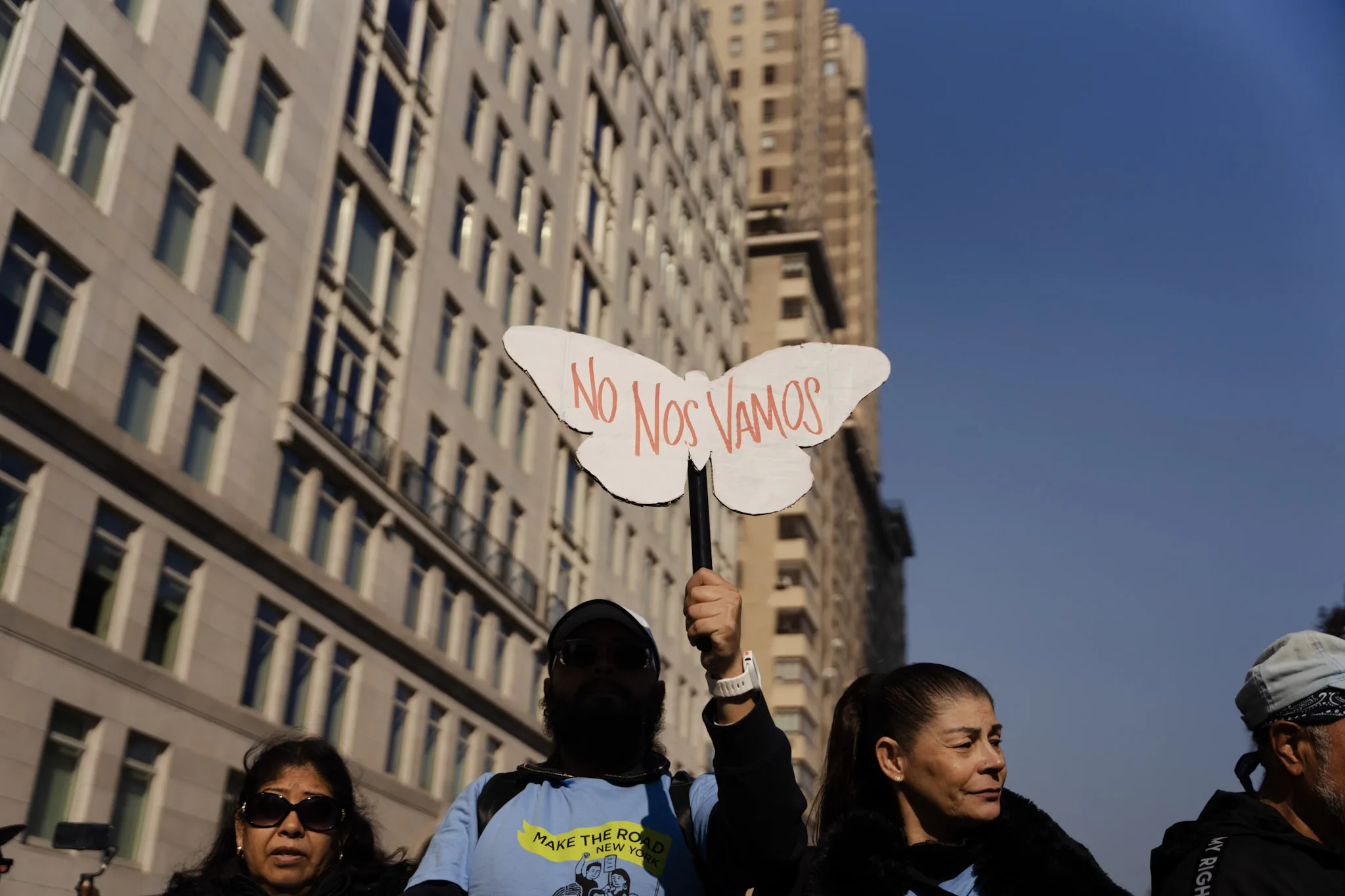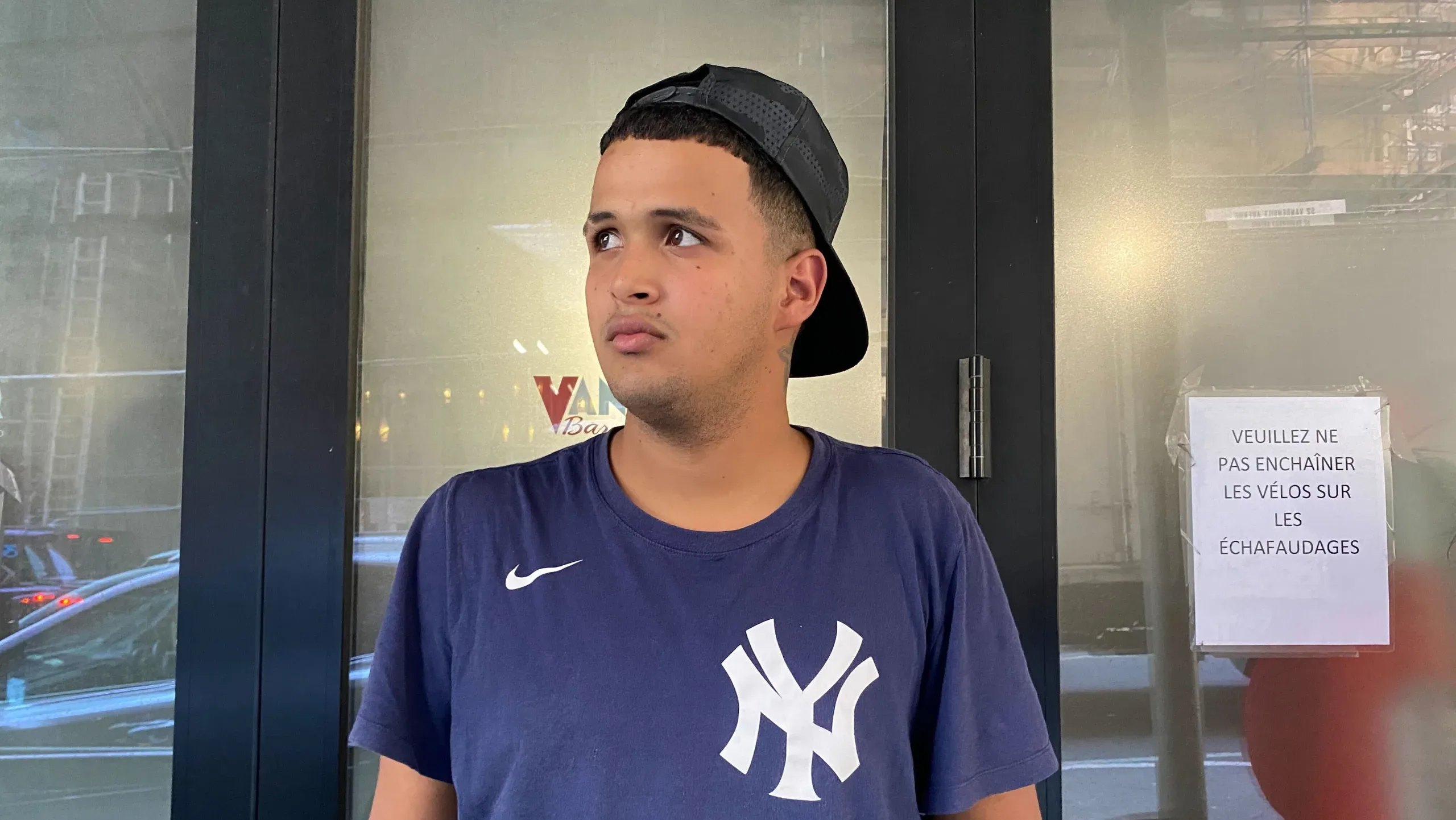
This article is part of the Retorno project from the Guatemala based nonprofit journalism organization El Intercambio. It was funded by the Seattle International Foundation.
In a federal courtroom in El Paso last fall, a public defender was arguing — without much success — that his client had already learned her lesson. After all, the young woman, an undocumented immigrant from Guatemala, had been detained for four months by that point. That was far too long for an unauthorized border crossing, the attorney was saying when the judge interrupted to address the defendant directly.
“Ms. Domingo, do you have anything to say regarding this case?” Senior United States District Court Judge David Briones asked Griselda Domingo-Godínez.
The 22-year-old woman answered in Spanish, though her native tongue is the indigenous Mayan language Mam; Mam interpreters are in short supply.
“Can you do me the favor of allowing me to return to my family?’’ Domingo implored the judge. “They are suffering and worrying about me. I promise you I will never return to this country.’’
It was a promise Domingo had made before, to the same judge in the same courtroom. Ten months earlier, she had appeared before Judge Briones on a previous felony immigration charge — illegal reentry into the United States — and she had gotten off relatively lightly: three years of probation, and non-reporting probation at that, because she would be deported to Guatemala in short order.
But it was a promise that, given the stark reality of Domingo’s life in the impoverished, male-dominated highlands of Guatemala, had proved difficult to keep. So this time, as a repeat offender who had violated the terms of her probation, she would not be as lucky.
In a hearing on Nov. 13 that lasted less than 10 minutes, Judge Briones sentenced Domingo to eight months in prison. (A month later, the judge made national headlines for blocking President Trump from using military construction funds to build a border wall).
During her incarceration, Domingo would have plenty of time to contemplate what lay ahead. It would be her third deportation, so it was easy to imagine: She would call her mother from the airport in Guatemala City, ask to borrow money, and use it to pay for the seven-hour bus trip to Huehuetenango in Western Guatemala. Her father — a deportee himself — would pick her up, and they would travel another 90 minutes to their hometown of San Juan Atitán.
Once back In San Juan, Domingo knew well, she would not be welcomed home with open arms. When a sanjuanero, as residents of the town are known, makes it to the United States, the family back home celebrates by holding a luncheon. But when a sanjuanero is deported, nobody celebrates. Deportation is seen as failure, and deportees endure a collective shaming. And if the deportee is a woman — especially a young, single, childless woman on her third deportation — the judgment is bound to be even harsher.
“There is never a happy day here, not here”
Situated at an elevation of 8,200 feet, San Juan Atitán is in many ways picturesque. It is nestled amid forests of oak and pine trees, and its central plaza is awash in fuchsia and red, the colors of its residents’ traditional attire. But its reality is harsher, and it has become an ejector town — a place that chases away its own people.
Domingo and her family are representative of the town’s “career migrants,’’ in the government’s words. Sanjuaneros started fleeing in the early 1980s, during the most violent phase of the country’s long civil war. Now they primarily leave to escape crushing poverty and hunger; nine of 10 children in the municipality are malnourished.
And, like Domingo, they often do not succeed in breaking free.
San Juan Atitán, with a population of 16,635, has one of the highest proportions of deportees in the country. That is why it was one of 51 towns selected in 2017 for a U.S.-supported program that aspired to slow the departure of Central Americans for el norte. But the program, called the Alliance for Prosperity in the Northern Triangle, contributed nothing tangible to San Juan Atitán, according to an analysis of budgetary data by El Intercambio.
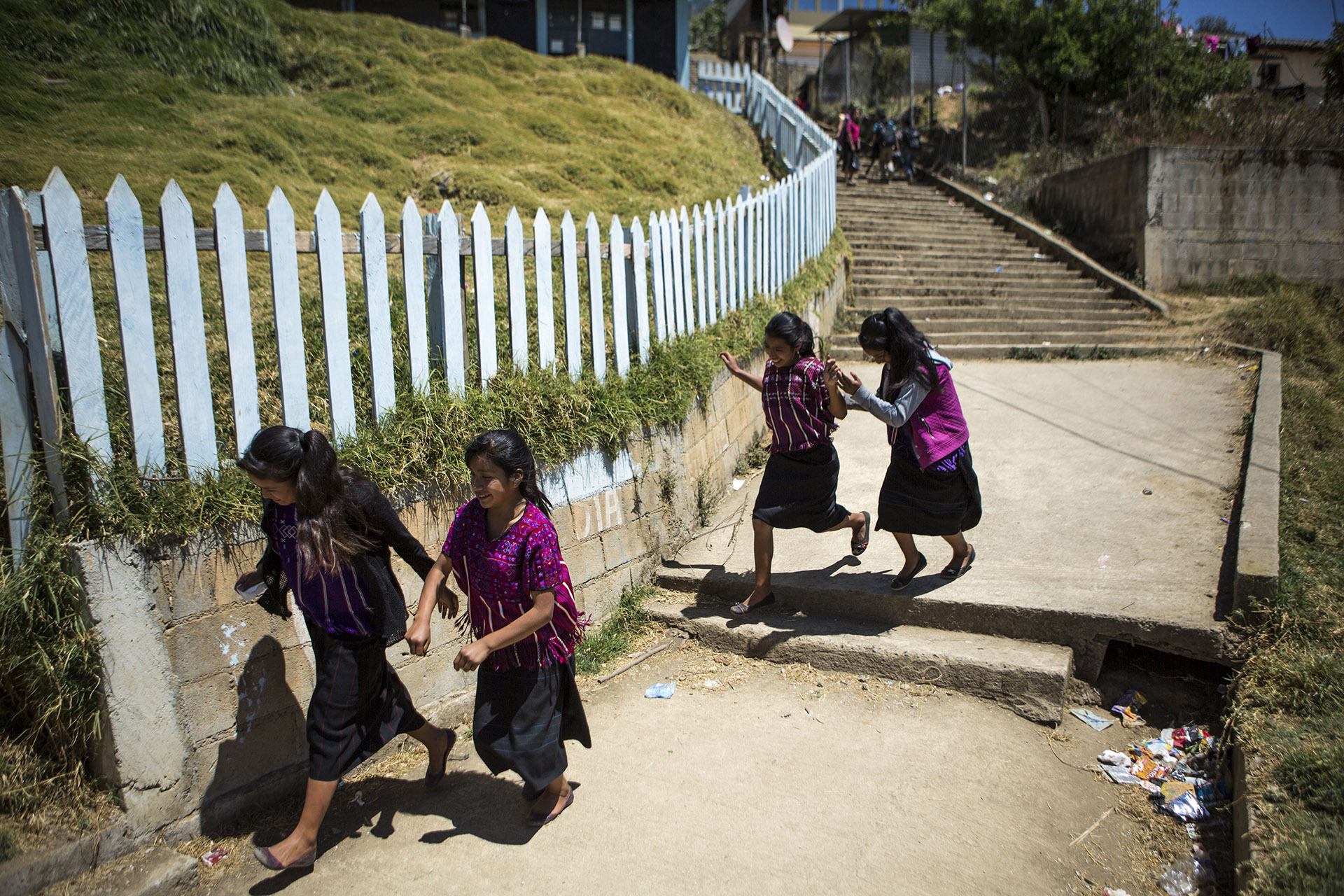
While it had been ambitious to believe the structural causes of irregular migration could be tackled expeditiously, and with money alone, the Guatemalan government never even increased funding to the town. A few budget lines were renamed, but its migration prevention plan made no new investments to change the residents’ circumstances or broaden their opportunities. The program was cancelled in 2019.
There is little steady employment in San Juan beyond a limited number of teaching jobs, banking jobs and municipal jobs for those with connections. Many residents, if they do not head north to the United States, migrate seasonally within Guatemala, traveling as family units to large coffee farms during harvest time. Beyond that, most men eke out a living as market vendors, and women tend to be artisans, often unpaid, sewing traditional suits for their husbands or fathers.
Domingo sees her hometown as a dead-end place. “There is never a happy day here, not here,’’ she said in an interview that took place after her second deportation but before her third attempt to make it to the United States. “I’m always sad, sad. Every day, I am always sad.’’
Formal schooling is limited; most sanjuaneros, like Domingo, have a sixth-grade education at best. Her father could not afford to pay for her school after that, she said. Some fathers do not let their daughters study at all. The town’s development plan identifies “patriarchy” as part of the identity and culture of the place.
Without education or paid work, and often with children in their care as well as deported spouses or parents, the women of San Juan Atitán find themselves increasingly burdened. That’s why it appears that they have been migrating in greater numbers. While there is no formal measure of how many leave, the number of women deported back to Huehuetenango (the department where San Juan Atitán is located) increased by 49 percent in 2018 over the previous year, according to an analysis of government data by El Intercambio.
Empty homes
The Domingos live on the outskirts of San Juan Atitán, in the village of Sacchilaj. Griselda’s father Marcos Domingo worked as a gardener in Miami for many years, and his earnings enabled him to build a small, concrete hillside house that he hasn’t gotten around to painting. It has three rooms with dirt floors, a patio, and a small plot to grow beans. Down the hill is the family’s previous home, which is wooden and smaller still, the reminder of an even poorer past.
When he lived in the United States, Marcos arranged for his three oldest children — his sons — to join him in Miami. They are all married and settled now, having legalized their immigration statuses through their marriages. But they’ve built large homes in their native village in case they decide to return someday, and Marcos, a chubby man with round, reddened eyes, showed them off proudly. The houses are unfurnished, but they signal the kind of wealth that a job in San Juan Atitán would never have provided. His oldest son’s house has a bathtub, and an American flag is painted on the exterior.

Domingo’s younger sister Eluvia Domingo, who is more chatty than Griselda, explained why her sister sought to follow in her older brothers’ footsteps. “She wanted to work,’’ she said. “She didn’t want to marry, because the men here are machistas. She doesn’t want anyone to hurt or cheat on her, or for anyone to say she lives off a man’s efforts.”
Now, though, Domingo is indebted to the men who helped her migrate. Her brother Rodrigo arranged her trips north and planned her route. A cousin who is a coyote took her on the first leg of her journey to Mexico. And her father put up the money, mortgaging some property and borrowing the rest from loan sharks.
After her second deportation in February 2019, all Griselda could think about was her debt, and it sent her into tears.
“My mom told me ‘Don’t cry,’” she said. “Because when I arrived, I was crying and crying and thought about killing myself. Because I owe so much money, and because many people made fun of me. That’s when I thought to kill myself, and my mom told me: ‘Don’t think like that.’
So after she conquered her feeling of hopelessness, Domingo resolved to try again to do the only thing she could think of: head north.
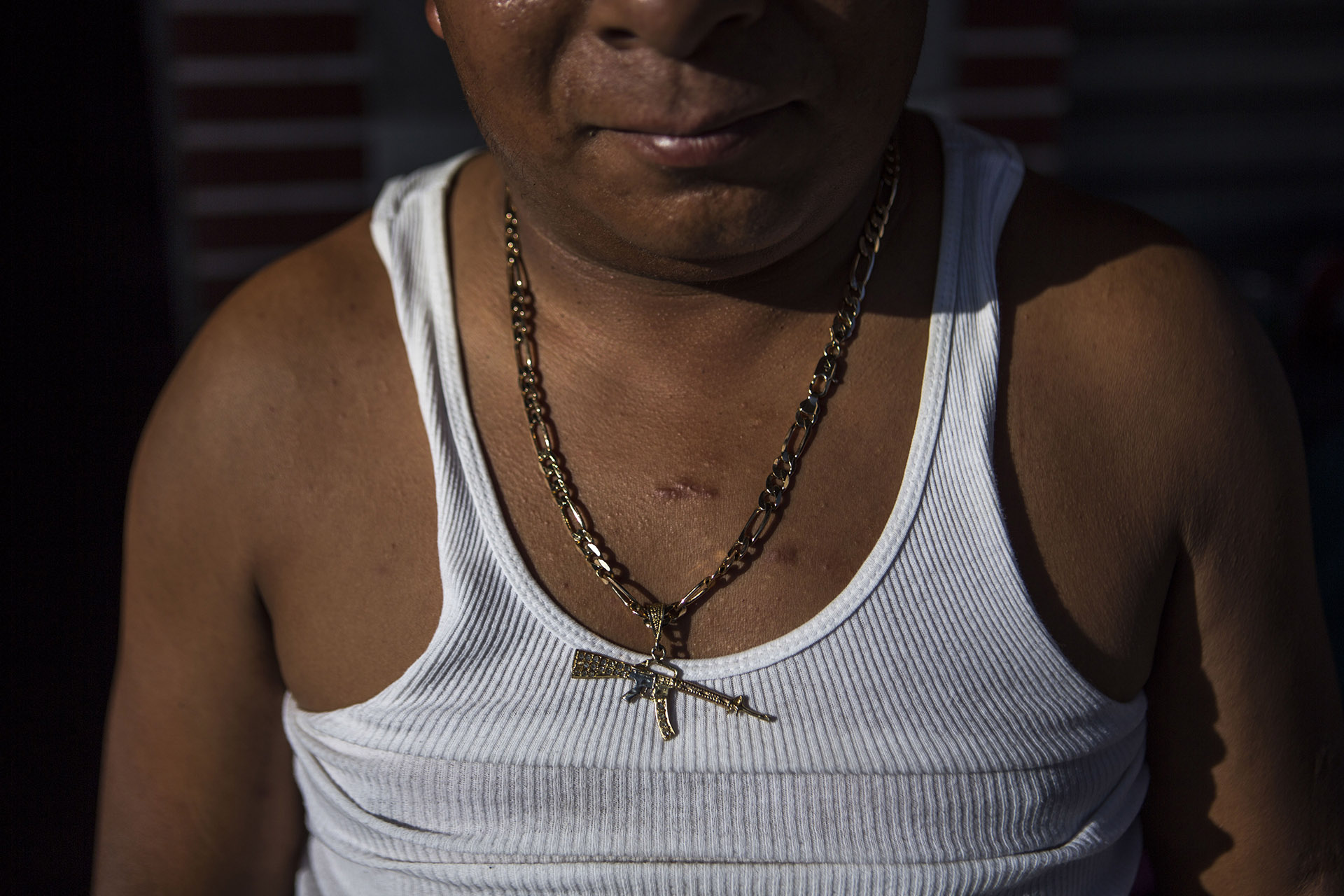
The picture of hunger
In November 2018, U.S. Ambassador to Guatemala Luis Arreaga visited San Juan Atitán. He met with Lorenzo Martín, leader of the indigenous council, and asked him about malnutrition and migration. Martín said he told the ambassador that there is infertile land where there is not enough water to cultivate crops.
“They said they would do more work with the female artisans and the market, in order to commercialize the traditional costume,” explained Martín, who, unlike the three councilmen joining him in the conversation, had never migrated.
But that proposed American-sponsored venture never materialized, Martín said.
Guatemalan officials also made an effort to meet with area residents to offer solutions to the intractable problems such as food insecurity and lack of healthcare that push residents, like Griselda Domingo, toward the United States.
One day in March, 2019, a delegation led by Dr. Olga Morales, director of the town’s health center, visited a family of farmers in Tuispichon, a village an hour away from Griselda Domingo’s home. It is both a natural paradise and a picture postcard of hunger, and Morales was there to report on the results of a government campaign against malnutrition. Government officials filmed the visit, during which the delegation remained standing while the family sat and fielded their questions with discomfort.
The mother’s responses, given in Mam, were disconcerting to the doctor and the municipal worker, but they only showed their surprise off-camera. The woman said the family is so poor that they had no beans or maize to eat — only vegetation.
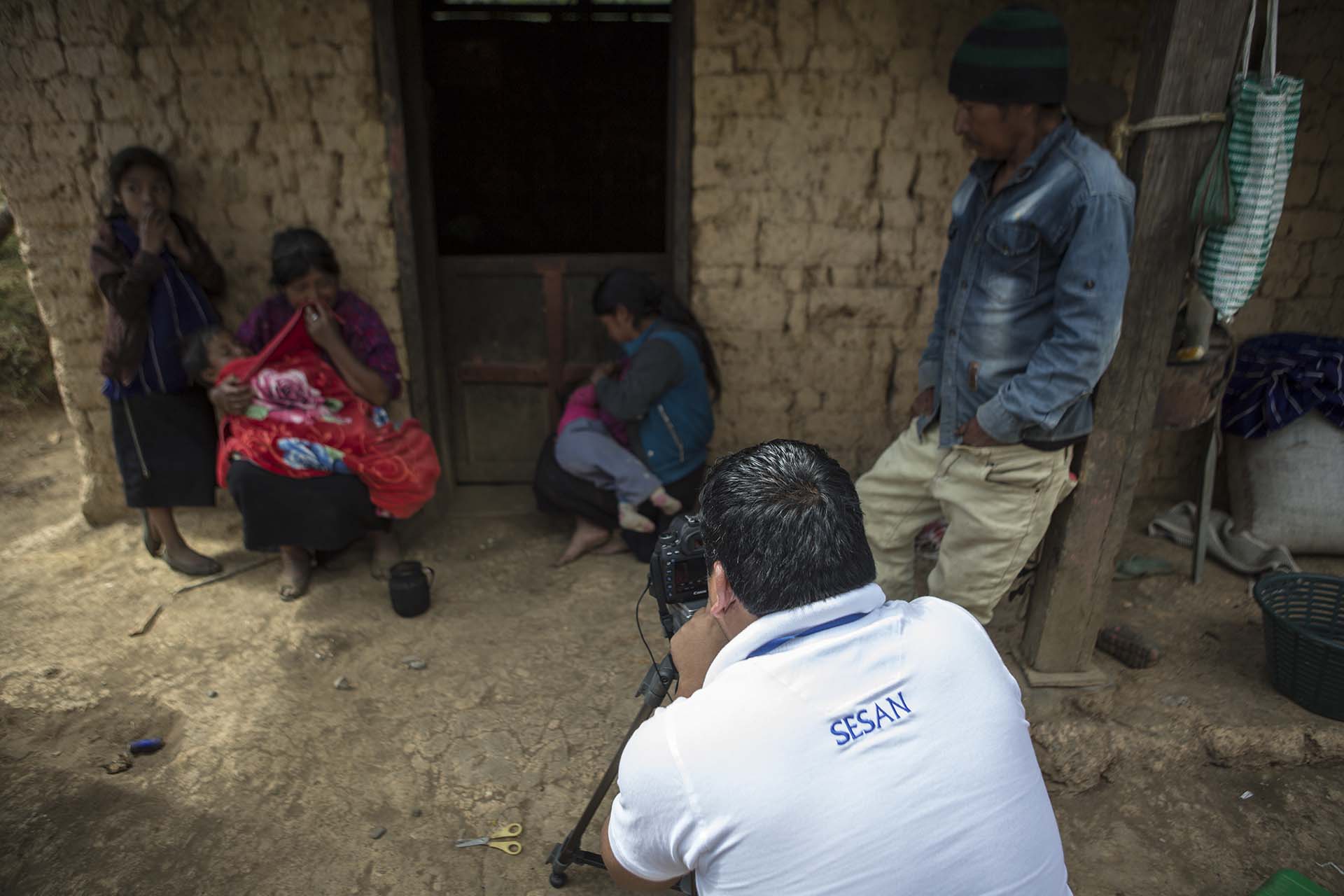
Morales had been caring for the family’s youngest child for months, but the two-year-old boy had shown no improvement at the visit. The child was so malnourished that he didn’t even cry. He was a toddler, but seemed like a baby because he didn’t walk.
His mother, sitting on the floor outside her home of mud and wood, glanced uncomfortably around her. The father, silent, observed the doctor and her team; his eyes were bloodshot. The other three children began to play. Everyone in the home was tense, and to them, the visit was disruptive.
The acute child malnutrition in San Juan Atitán was another reason the National Program for Competitivity of the Ministry of Finance chose the migrant town as one in need of attention and investment under the migration-prevention plan. But rather than investing new resources under the migration-prevention plan, the government renamed line items on already disbursed government funds, according to Gabriela Pérez, an external advisor to the Guatemalan government for the Alliance for Prosperity.
It is difficult to assess whether the United States government actually increased funding to its many programs in the municipality of San Juan. The town’s mayor does not believe it did. After all, this place, chosen by the government in 2012 as the launch point for its American-supported Zero Hunger Plan, still registers the second-highest malnutrition rate in Guatemala. Nine out of ten children are malnourished.
By the end of 2019, the idea of prosperity under the program was in shambles. Mexico had agreed to act as the United States’s southern border enforcer. Guatemala had become a receiving country for asylum seekers re-routed from the U.S., even though it also had the highest outbound migration of the three Northern Triangle countries from 2018 through 2019. During those years, Griselda left San Juan Atitán three times.
Migration as a vocation
There are 28 students in a San Juan Atitán school where the students enjoy a view from the top of the town over the Sierra de los Cuchumatanes mountain range. When reporters from El Intercambio visited recently, the students responded quickly to their request: “Raise your hand if you have a parent who is in the U.S.”
Thirteen hands shot into the air.
Ten other children said their fathers had been deported, and four of them are subsequently trying to migrate again. None of their mothers live in the United States, while 14 have a sibling there. Most of the students said they believe they will find work in San Juan, while a dozen want to migrate to the United States themselves.
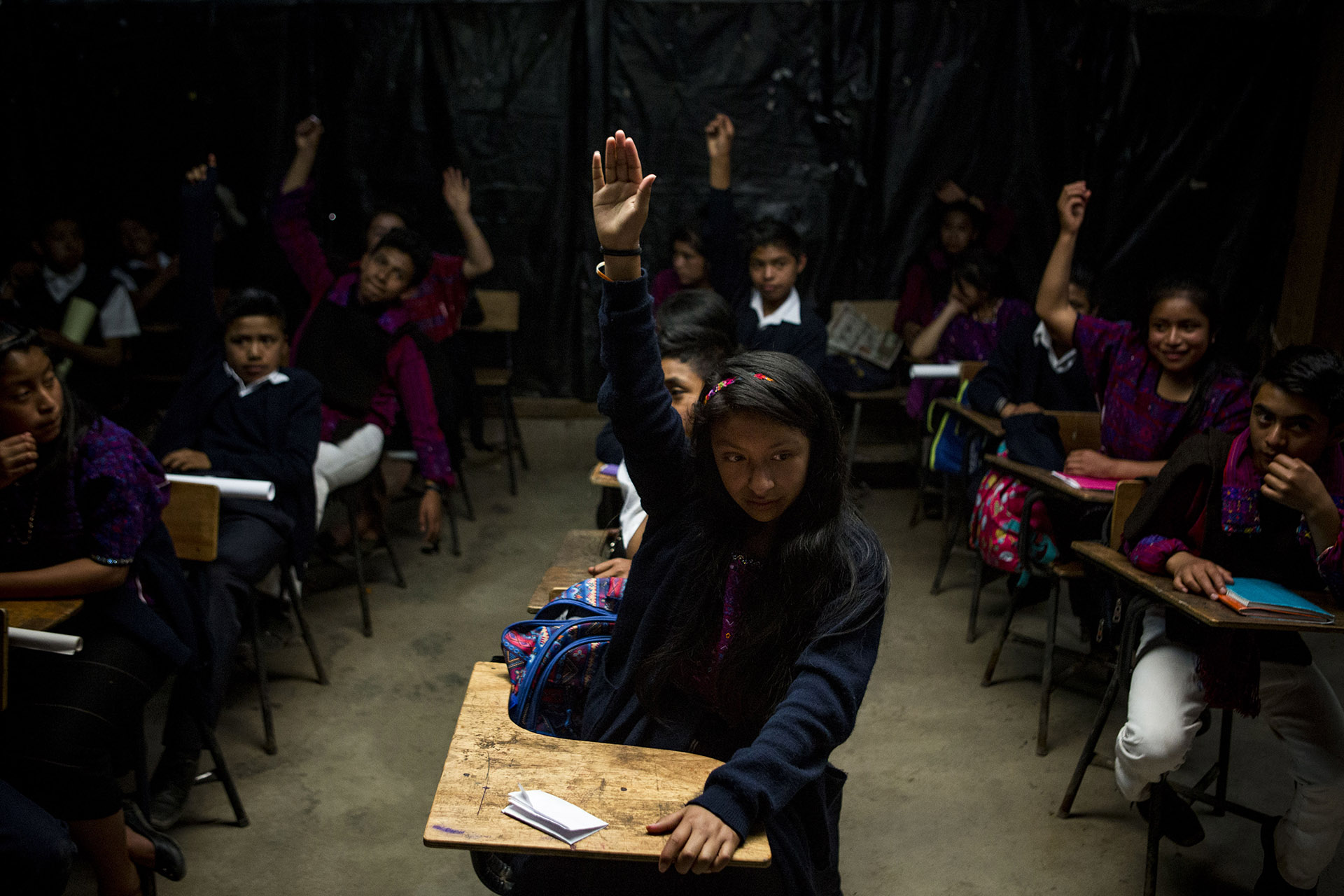
On December 31, 2018, an eighth grader had told the school’s principal “I’m out of here.” The principal had asked him to wait until he had completed the ninth grade (after which students enter high school or vocational school). He had responded that he couldn’t. His father was in debt and he was planning to leave with him because crossing with a minor was believed to be a surer bet.
“Everyone looks for a place they feel best. I, for example, feel best here,” said Francisco Carrillo, the principal.
As the mayor of this town, he never tried or wanted to leave for the United States. He said he asks the students what they want to be. “They want to be doctors, lawyers, professors — but in Guatemala there’s no source of work,” he said.
Deported
A few months after Griselda Domingo was deported for the second time, she tried again.
On May 29, 2019, she re-entered the U.S. near El Paso. That same day, she was apprehended by Border Patrol agents at the El Paso-Los Angeles Limousine Express Bus Station, according to the criminal complaint filed in her case.
After Domingo served her prison sentence, she faced an additional penalty: She would be barred from entering the U.S. for two decades under penalty of 2 to 20 years in prison, according to an English-language DHS removal warning she carried with her back to Guatemala.
Hours before finding out she would be deported, Domingo had sung Christian hymns with other detainees and a pastor. She was so moved that she cried herself to sleep, which only deepened her surprise when the guard woke her that night to let her know she would be traveling in just a few hours to Guatemala.
Domingo was wearing a grey sweater, black jeans, and sneakers without shoelaces — deportees are forced to remove them before flight — and she looked shell-shocked. When she saw the reporters from El Intercambio whom she had met in her hometown the previous year, she began sobbing. She was exhausted, she said.
Shortly after midnight on Feb. 6, Domingo was ushered onto a plane filled with deportees in handcuffs. There are weekly flights to Guatemala, and hers left El Paso at 1 a.m. Seventeen hours later, after a long delay at the Guatemala City airport, she walked into the Migrant House, a Jesuit shelter in the historic center of the capital city. She was accompanied by more than a dozen other Central Americans.
Domingo asked to borrow a phone in order to make a call to her sister and mother, who had received word of her return the night before.
Her tears flowed as she spoke to them, but then she received some good news. After her previous deportations, she had traveled alone by bus to Huehuetenango. But this time, her parents, sister, aunt and uncle were already on their way to pick her up.
The Migrant House was mostly empty that day. The staff interviewed Domingo in Spanish, noting she was pale — likely due to the lack of light in the detention center, they said — and that she was showing symptoms of anemia. During her imprisonment, she had subsisted on instant soups she bought with money her brother Rodrigo sent. She had lost weight and was even more distraught than a year before.
Back in Guatemala City, as Domingo painted her nails for the first time in months, she mentioned that while in prison she had thought again about killing herself. After having chicken soup for dinner, she asked to rest around 10 p.m. When her family arrived 90 minutes later, they timidly went upstairs to pick her up.
Her father stayed on the couch while the rest entered her room. Her mother called to her: “Griselda, Griselda,” but Griselda didn’t immediately react. She gradually greeted them with hugs and left the room to see her father, her head bowed. He hugged her lightly and gruffly told her not to worry, that it was all over. But the tension of the debt hung over their heads.
Half an hour later, they left for San Juan. Guatemalan highways are dangerous at night, but Domingo preferred to travel under cover of darkness, so that nobody in Sacchilaj would realize she had come home once again.
This story was translated by Roman Gressier


